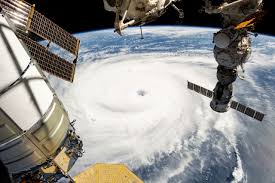Japan is gearing up for the launch of its HTV-X1 cargo spacecraft on October 21, 2025, marking the inaugural flight of the next-generation HTV-X series. The mission will deliver essential supplies, research materials, and equipment to the International Space Station (ISS), reaffirming Japan’s vital role in international space collaboration.
Upgraded Design and Capabilities
The HTV-X1 represents a major technological leap from its predecessor, the Kounotori (HTV) series. It boasts improved cargo capacity, fuel efficiency, and avionics systems designed to enhance mission reliability and turnaround speed. Engineers from the Japan Aerospace Exploration Agency (JAXA) highlighted that these upgrades will allow for more flexible payload management and faster preparation for future missions.
“The HTV-X1 is built for efficiency and sustainability. It’s a product of years of lessons learned from past missions and collaboration with international partners,” said a JAXA spokesperson ahead of the launch.
Mission Objectives and Cargo Details
The HTV-X1 will carry a diverse mix of food supplies, laboratory instruments, spare parts, and scientific payloads destined for the ISS crew. These items are essential for maintaining daily operations aboard the station and for advancing ongoing research in biology, materials science, and space medicine.
The spacecraft’s new modular cargo system enables rapid loading and unloading, improving operational flexibility compared to earlier models. JAXA engineers also integrated advanced autonomous navigation technology to assist in docking with the ISS.
International Cooperation with NASA
The mission is a product of close collaboration between JAXA and NASA, with teams working jointly to ensure a seamless rendezvous and docking procedure. Once the HTV-X1 reaches the ISS, astronauts will unload its contents, which include high-priority research materials for ongoing experiments.
The spacecraft will approach the ISS autonomously, guided by an updated control system capable of precise maneuvering. NASA officials have praised JAXA’s engineering progress, calling the HTV-X program “an essential component of international space logistics.”
Significance for Japan’s Space Program
The upcoming launch marks a milestone for Japan’s space industry, demonstrating its continued leadership in spacecraft development and orbital logistics. The mission also serves as a crucial step toward future commercial resupply and deep-space support missions that JAXA aims to pursue.
Following the completion of its delivery mission, the HTV-X1 is expected to either return safely to Earth or perform a controlled deorbit, depending on mission requirements and remaining cargo. Data gathered during this maiden flight will help refine the design and operational strategies for subsequent HTV-X missions.
Global Anticipation and Future Outlook
The HTV-X1 launch has attracted significant attention from the space industry and scientific community, with experts eager to analyze its performance. If successful, the mission will strengthen Japan’s position as a cornerstone contributor to the ISS and international space exploration efforts.
As humanity moves closer to establishing long-term presence in space, missions like the HTV-X1 will play a critical role in ensuring sustainability, innovation, and collaboration beyond Earth’s orbit.

